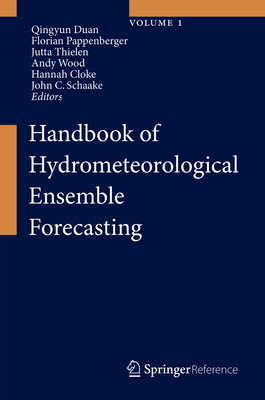Tangible Modeling with Open Source GIS
暫譯: 使用開源GIS的具象建模
Anna Petrasova, Brendan Harmon, Vaclav Petras, Payam Tabrizian, Helena Mitasova
- 出版商: Springer
- 出版日期: 2018-05-24
- 售價: $5,620
- 貴賓價: 9.5 折 $5,339
- 語言: 英文
- 頁數: 202
- 裝訂: Hardcover
- ISBN: 3319893025
- ISBN-13: 9783319893020
-
相關分類:
地理資訊系統 Gis
海外代購書籍(需單獨結帳)
相關主題
商品描述
This book provides an overview of the latest developments in the fast growing field of tangible user interfaces. It presents a new type of modeling environment where the users interact with geospatial data and simulations using 3D physical landscape model coupled with 3D rendering engine. Multiple users can modify the physical model, while it is being scanned, providing input for geospatial analysis and simulations. The results are then visualized by projecting images or animations back on the physical model while photorealistic renderings of human views are displayed on a computer screen or in a virtual reality headset. New techniques and software which couple the hardware set-up with open source GRASS GIS and Blender rendering engine, make the system instantly applicable to a wide range of applications in geoscience education, landscape design, computer games, stakeholder engagement, and many others.
This second edition introduces a new more powerful version of the tangible modeling environment with multiple types of interaction, including polymeric sand molding, placement of markers, and delineation of areas using colored felt patches. Chapters on coupling tangible interaction with 3D rendering engine and immersive virtual environment, and a case study integrating the tools presented throughout this book, demonstrate the second generation of the system - Immersive Tangible Landscape - that enhances the modeling and design process through interactive rendering of modeled landscape.
This book explains main components of Immersive Tangible Landscape System, and provides the basic workflows for running the applications. The fundamentals of the system are followed by series of example applications in geomorphometry, hydrology, coastal and fluvial flooding, fire spread, landscape and park design, solar energy, trail planning, and others.
Graduate and undergraduate students and educators in geospatial science, earth science, landscape architecture, computer graphics and games, natural resources and many others disciplines, will find this book useful as a reference or secondary textbook. Researchers who want to build and further develop the system will most likely be the core audience, but also anybody interested in geospatial modeling applications (hazard risk management, hydrology, solar energy, coastal and fluvial flooding, fire spread, landscape and park design) will want to purchase this book.
商品描述(中文翻譯)
這本書提供了快速成長的實體使用者介面領域最新發展的概述。它展示了一種新的建模環境,使用者可以透過結合3D物理地形模型和3D渲染引擎來互動地理空間數據和模擬。多位使用者可以在掃描過程中修改物理模型,為地理空間分析和模擬提供輸入。然後,結果透過將影像或動畫投影回物理模型上來進行可視化,同時在電腦螢幕或虛擬實境頭戴裝置中顯示人類視角的照片真實渲染。新的技術和軟體將硬體設置與開源的GRASS GIS和Blender渲染引擎結合,使得該系統能夠立即應用於地球科學教育、景觀設計、電腦遊戲、利益相關者參與等多種應用。
本書的第二版介紹了一個更強大的實體建模環境版本,具備多種互動類型,包括聚合物沙模具、標記放置和使用彩色毛氈片劃定區域的功能。關於將實體互動與3D渲染引擎和沉浸式虛擬環境結合的章節,以及一個整合本書中介紹的工具的案例研究,展示了系統的第二代——沉浸式實體地景,通過互動渲染建模的地景來增強建模和設計過程。
本書解釋了沉浸式實體地景系統的主要組件,並提供了運行應用程序的基本工作流程。系統的基本原理後面是系列的應用範例,包括地貌測量、水文學、沿海和河流洪水、火災擴散、景觀和公園設計、太陽能、步道規劃等。
研究生和本科生以及地理空間科學、地球科學、景觀建築、電腦圖形學和遊戲、自然資源等多個學科的教育工作者,將會發現這本書作為參考或輔助教材非常有用。希望建立和進一步發展該系統的研究者將是主要讀者,但任何對地理空間建模應用(如災害風險管理、水文學、太陽能、沿海和河流洪水、火災擴散、景觀和公園設計)感興趣的人也會想購買這本書。











